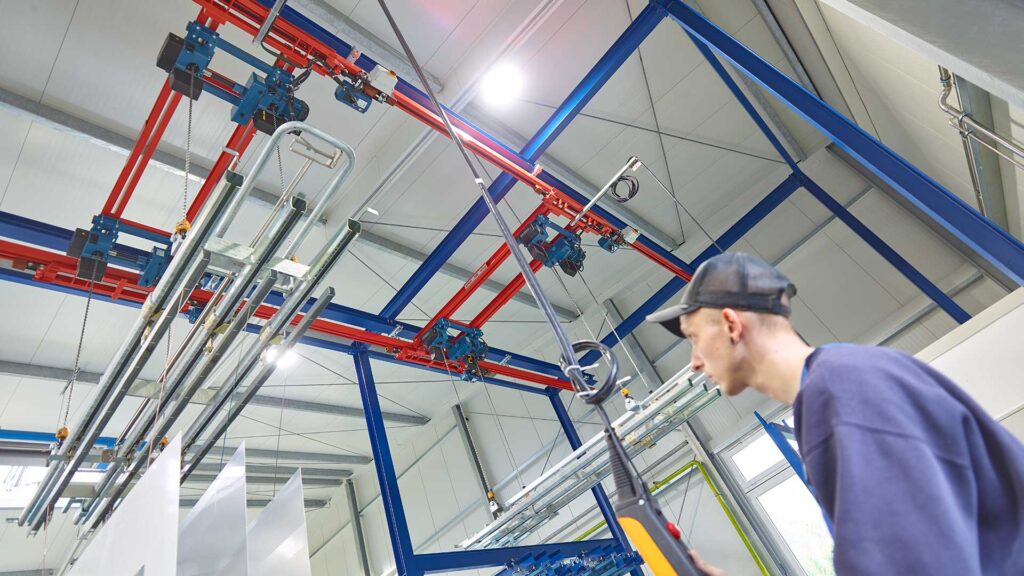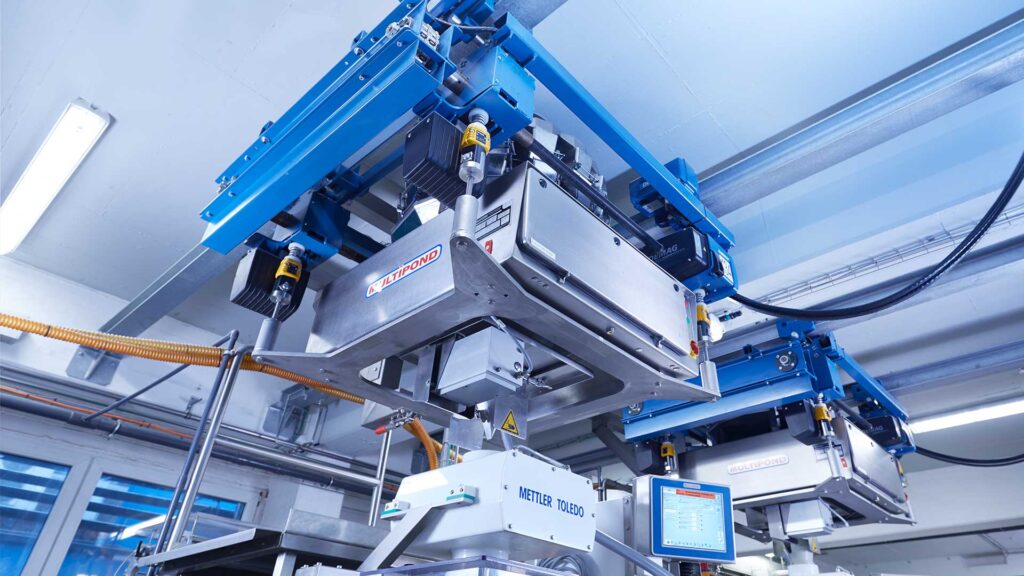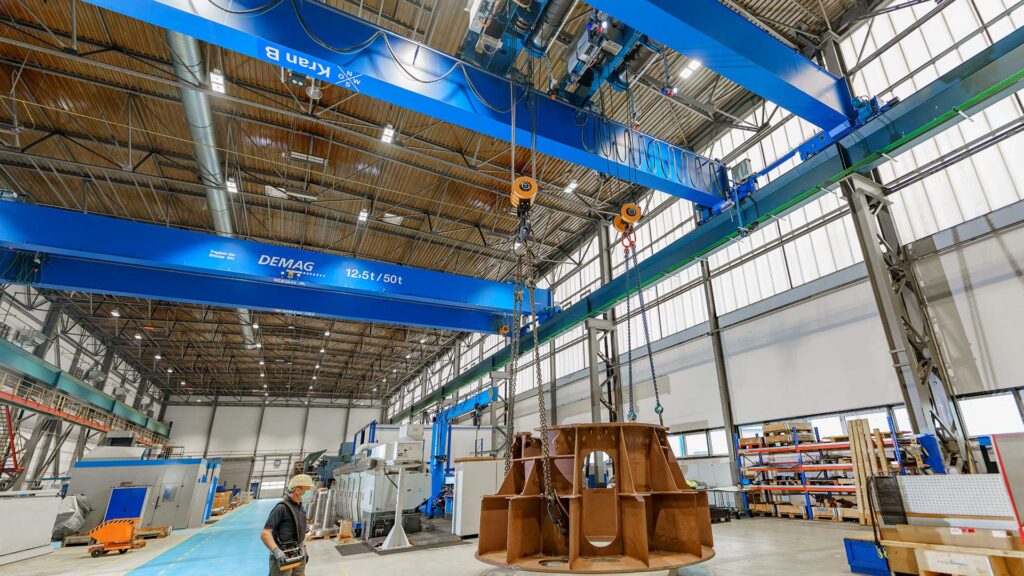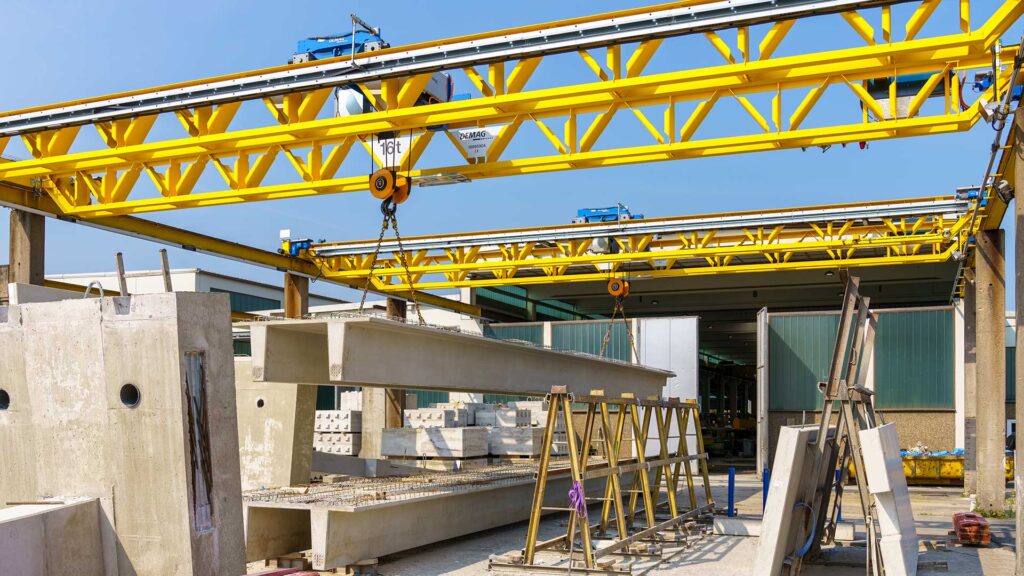Manufacturing facilities lift awkward, unbalanced, or long heavy loads to produce an end product. Many of the WIP or components used to build a final product require more specialized handling than available with one hook. In certain lifting applications, synchronized hoists allow for safer, more efficient movement of a load. Read on to learn more about synchronized lifting options with chain hoists and rope hoists.
Comparing Synchronous and Independent Lifting and Synchronized Fixed Lifting
Synchronous and independent lifting (S/I lifting) allows for the ultimate flexibility for synchronized hoist applications. The chain hoists used in SI lifting are 2 separate units. They can be used together to synchronize lifting products with two hooks or may be used independently, lifting a single load with one hook. Some applications of tandem lifting allow the two hoists to move apart on the bridge of the crane while others require the two hoists to be connected with a link bar on the trolleys.
Fixed synchronized lifting with chain hoists uses two or four hook leadoffs on a fixed structure. The structure maintains the location and distance between the hooks. One hoist motor runs two hooks so the hoist body is connected to the second hook with a drive shaft. The hooks are always in sync at the same distance apart.
Fixed Synchronized Lifting with Chain Hoists
The Demag LDC-D dual chain hoist pairs 2 hooks together to operate in sync. This setup is comprised of a fixed structure with two mechanically synchronized hooks. The LDC-D double chain hoist can be positioned at right angles or parallel to the track being used, commonly KBK enclosed rail steel or aluminum track. Depending on your project requirements, there are solutions with standard or low headroom.
The synchronized of the LDC-D or KLDC-D hooks are powered by one hoist body and mechanically connected through a drive shaft between the two chain sets with hooks up to 19 feet apart. The fixed structure can be equipped with manual, powered, or articulating trolleys.

A Demag customer in Schwerin, Germany was expanding the production space in their coating facility. This company is a market leader specializing in made-to-order door panels. The operations required aluminum parts to be coated, a process completed in a bay covering the preparation to surface treatment processes. They determined keeping the manual processes in pretreatment and dipping tanks would best meet their requirements. The processes would then transition to the automated processes for the steps to follow. See how Mecklenburger Baulemente GmbH found their production solution with the Demag LDC-D double chain hoist and KBK crane.
When lifting awkward or odd shaped loads, using multiple hooks can make those processes safer and more efficient. The Demag LDC-Q quad chain hoist uses a fixed frame to allow lifting with four synchronized hooks. The mechanically synchronized hooks are connected via a drive shaft connecting two sets of chain hoists. With the hooks always in sync, permanent attachment to the lifted structure can be accomplished or use the hooks for the ability to change what is connected to meet your requirements. The LDC-Q Quadro unit can be matched with manual, powered, or articulating trolleys to meet your requirements, lifting up to 11,000 pounds.

A customer in the food industry used scales to weigh and package peanuts and other nuts. The scales needed to be monitored, refilled, and maintained. The customer used a Demag LCD-Q Quadro chain hoist solution to meet their requirements.
Synchronized Lifting with Wire Rope Hoists
As capacities increase, lifting with two wire rope hoists may be required. For loads that are long and need to be lifted from two points, a synchronized hoist option uses two hoists in synchronized mode to run and stop at the same time, maintaining alignment. In addition to synchronized lifting, the hoists can travel in synchrony. Hoists can be synchronized on the same girder or on separate girders.


Maintaining this alignment can easily be accomplished with programmable hoists. This means there is an interface that can be programmed by your installation team to move in tandem. Two identical contactor controlled hoists can be programmed for dual lifting through the radio control.
The newest addition to the Demag wire rope hoist offering is the DVR Rope Hoist. This hoist is versatile and compact to meet the requirements for a variety of industrial lifting applications. It is available in 5 sizes to lift loads to 80 tons. The DVR comes in a configuration to meet your requirements with standard headroom, low headroom, double girder trolley, and foot mounted. Lift with variable or two speed lifting for an everyday, high performance solution.
Use the DVR rope hoist as a standard hoist or with its intelligent features. These smart features focus on safety. Activate anti sway control and slack rope prevention for a safer, more efficient lift. The DVR can use features like area-specific load reduction to avoid areas where capacities change due to building structure or other parameters. Bypass control blocks the hoist from travelling in specific zones, like areas where machinery is higher than others.
Tandem control is easy with the smart features of the DVR rope hoist. Loads can be transported safely with two DVR hoists with a single control unit. When you need to synchronize additional hoists, Smart Tandem Control allows up to four DVR rope hoists on two cranes to be synchronized.
Tandem or synchronized lifting can be accomplished in many ways to meet your requirements. Lifting a load with two connecting points, or two hooks, can make the lift safer and more efficient for your operations. Whether you require synchronous and independent lifting, fixed synchronous lifting with chain hoists, or tandem lifting with wire rope hoists, make sure you work with a knowledgeable overhead crane dealer. This will assure the application will meet your project specifications and budget.
